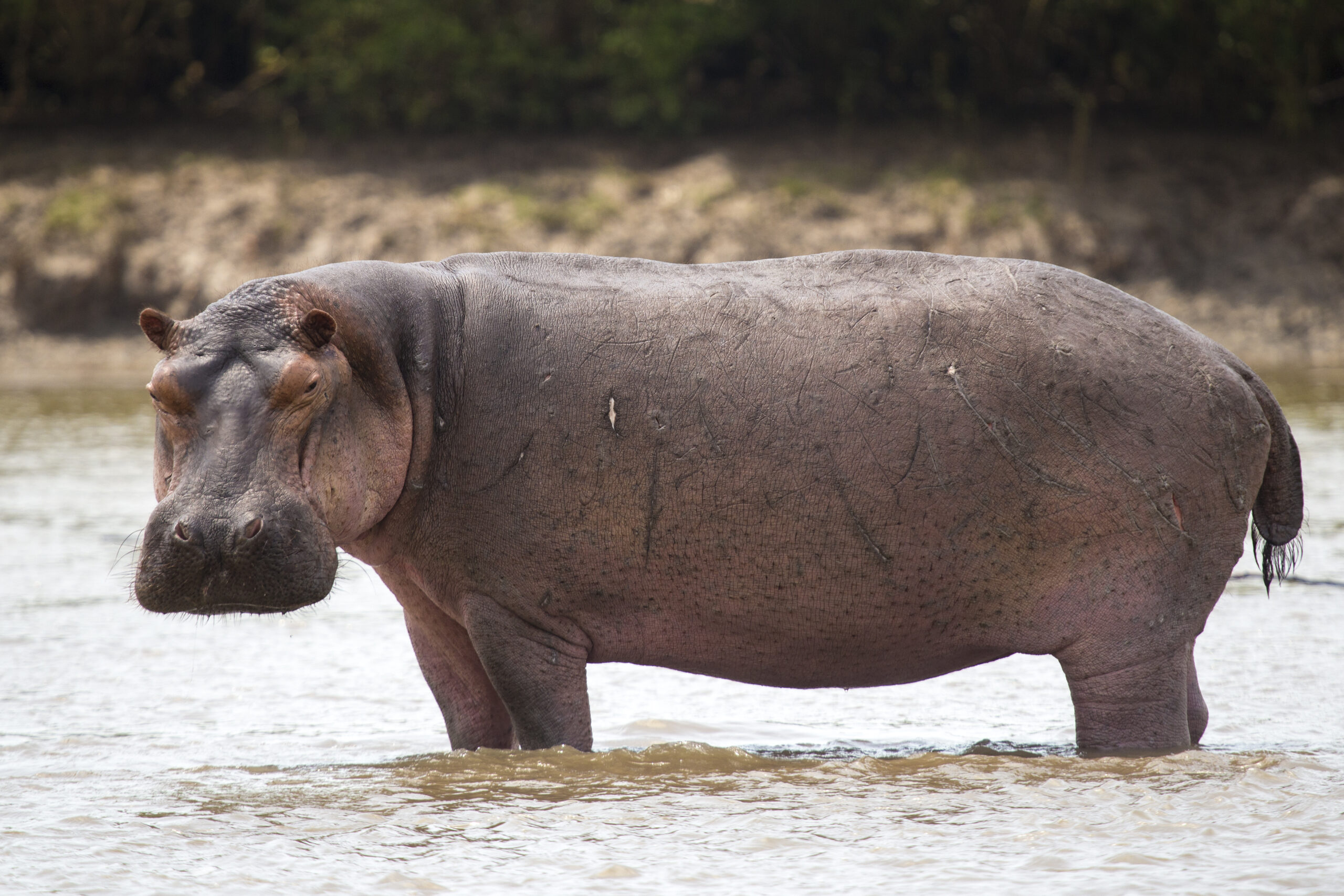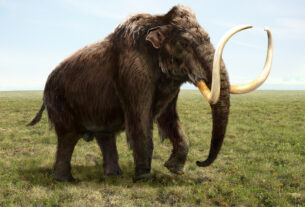In the heart of Africa’s waterways, where rivers and lakes weave through lush landscapes, the hippopotamus reigns as one of the most awe-inspiring and enigmatic creatures. With their immense size, formidable strength, and surprisingly agile nature, hippos command attention and respect from anyone fortunate enough to encounter them. Often depicted as peaceful giants basking in the water, hippos are far more complex than their placid exterior suggests. Beneath the surface, these colossal mammals play a crucial role in their ecosystems, shaping their environment and influencing the lives of countless other species.
Despite their impressive physical presence and robust nature, hippos face a range of threats that jeopardize their survival. From habitat loss and poaching to human-wildlife conflicts, these challenges have led to a decline in hippo populations across Africa. Understanding the intricacies of their behavior, the importance of their role in the ecosystem, and the ongoing conservation efforts is essential for ensuring the future of these magnificent animals. As we delve into the world of hippos, we uncover not only their remarkable adaptations and social dynamics but also the pressing need to protect and preserve their habitats for generations to come.

(commons.wikipedia)
Physical Characteristics and Habitat
Hippos are easily recognizable by their massive bodies, short legs, and large mouths. An adult hippo can weigh between 1,500 to 3,200 kg (3,300 to 7,050 pounds), with males being significantly larger than females. Their barrel-shaped torsos are supported by stumpy legs, each equipped with four webbed toes that aid in walking on the riverbed and navigating muddy terrain. They have thick, nearly hairless skin that is grayish-brown with a pinkish hue around the eyes and ears. This skin is remarkably thick, often measuring up to 6 cm (2.4 inches), which provides protection against predators and environmental factors.
A unique characteristic of hippo skin is its ability to secrete a natural sunscreen that appears reddish, leading to the myth that hippos sweat blood. This secretion, often referred to as “blood sweat,” is a combination of hipposudoric acid and norhipposudoric acid, which has antibacterial properties and helps protect the skin from sunburn and dehydration. Hippos also have impressive mouths, equipped with large canines and incisors, which they use primarily for defense and during aggressive encounters with rivals or predators. These physical attributes make the hippo one of the most formidable animals in its habitat.
(Habitat)
Hippos are predominantly found in rivers, lakes, and mangrove swamps across sub-Saharan Africa. They are highly dependent on water bodies for their survival, spending up to 16 hours a day submerged to keep their massive bodies cool under the hot African sun. These water bodies provide a refuge from the heat, as well as a medium for social interactions and protection against predators. The presence of water is essential for their thermoregulation and skin hydration, as they can quickly become overheated and dehydrated if kept out of water for too long.
Their amphibious lifestyle is supported by several adaptations. Their eyes, ears, and nostrils are located on the top of their heads, allowing them to see, hear, and breathe while mostly submerged. This positioning is particularly advantageous for detecting predators and potential threats while keeping the rest of their bodies hidden underwater. Additionally, hippos have the ability to close their nostrils and hold their breath for extended periods, enabling them to stay submerged and out of sight for up to five minutes. These adaptations make them well-suited for their aquatic environments.
(Aquatic Adaptations)
Despite their bulk, hippos are remarkably agile in water. They use their webbed feet to navigate through aquatic environments with surprising ease. Unlike many aquatic animals, hippos cannot swim in the traditional sense. Instead, they are buoyant and move efficiently by pushing off the riverbed in a series of graceful bounds. This mode of movement allows them to travel quickly and effortlessly through their watery habitats, and their large, buoyant bodies enable them to float with minimal effort.
Their aquatic prowess extends to their ability to hold their breath for up to five minutes, allowing them to stay submerged and hidden from potential threats or disturbances. This ability is crucial for their survival, as it enables them to avoid predators and human activity. Additionally, hippos are known to create channels and pathways in the aquatic vegetation, which can benefit other aquatic species by improving water flow and creating new habitats. Their presence in water bodies is essential for the ecological balance of these environments.
(Environmental Impact)
Hippos play a crucial role in their habitats, not only by shaping the aquatic and terrestrial environments but also by influencing the dynamics of other species within these ecosystems. Their grazing activities help maintain open grasslands, preventing the overgrowth of vegetation and promoting biodiversity. By consuming large quantities of grass, hippos create a habitat that supports a variety of other herbivores and predators. Their movement between water and land also creates pathways that can be used by other animals, facilitating access to water and grazing areas.
In addition to their impact on land, hippos contribute significantly to the health of aquatic ecosystems. Their dung provides essential nutrients that support aquatic life, including fish and invertebrates. This nutrient input can enhance the productivity of water bodies, benefiting a wide range of species. However, their dependency on water makes them vulnerable to habitat loss and changes in water availability. Conservation measures, such as protecting water sources and managing human-wildlife conflicts, are essential to ensure the continued survival of hippos and the ecosystems they support.
Behavior and Social Structure
(Group Structure and Leadership)
Hippos are fascinating social animals that live in groups known as pods, herds, or bloats, typically consisting of 10 to 30 individuals. These groups are structured around a dominant male who assumes a leadership role and diligently defends the territory against rivals. This dominance is established through displays of strength and aggression, such as wide yawning to reveal their large canines and engaging in physical confrontations. The dominant male’s control is crucial for maintaining order within the group and securing access to vital resources like water and grazing grounds.
The leadership role also involves managing the group’s movements and ensuring the safety of its members. Male hippos often mark their territory with dung and vocalizations, creating a clear boundary that is fiercely defended. These territorial disputes can be intense, with males demonstrating their power through dramatic charges and combat. This competitive dynamic ensures that only the strongest individuals hold sway, which in turn influences the stability and cohesion of the group.
(Female and Young Hippos)
Females and young hippos form the core of the social structure within a pod. Female hippos are integral to the group’s social stability, as they provide care and protection for the calves. They are attentive mothers, often seen keeping their young close while navigating their aquatic environment and moving to land for grazing. The maternal role is critical for the calves’ development, as young hippos rely heavily on their mothers for nourishment and safety during their early stages of life.
Calves are born in the water and can swim almost immediately, which is essential for their survival. The strong social bonds among females further enhance the group’s stability, with shared responsibilities for rearing young and maintaining group cohesion. These bonds are supported by frequent interactions and social behaviors, contributing to the overall harmony and effectiveness of the pod’s structure.
(Territorial Aggression)
Despite their social nature, hippos are known for their intense territorial aggression. They are highly protective of their space and can react aggressively towards perceived threats from humans and other animals. This aggression is particularly pronounced when defending their territory, young, or during mating disputes. Hippos possess powerful jaws and significant physical strength, making them formidable adversaries capable of causing severe injuries or fatalities.
Their aggressive behavior extends to interactions with boats and humans, where they have been known to capsize small vessels and launch attacks with little provocation. This territorial aggression is a crucial aspect of their behavior, driven by the need to safeguard essential resources and maintain dominance within their environment. As a result, hippos are considered one of the most dangerous animals in Africa due to their unpredictable and aggressive nature.
(Nocturnal Grazing Behavior)
Interestingly, while hippos spend most of their daylight hours submerged in water to regulate their body temperature and protect their skin from the sun, they emerge at night to graze. This nocturnal activity is essential for their survival, as it allows them to access the grasses and vegetation needed to maintain their large body mass. Hippos can travel up to 10 kilometers (6 miles) from their water source in search of food, demonstrating their significant foraging range.
During these nighttime excursions, hippos consume substantial amounts of vegetation, up to 40 kilograms (88 pounds) of grass per night. This feeding behavior is crucial for their overall health and energy levels, as the nutrients gained support their massive size. By grazing on land, hippos also play a role in shaping their habitat, influencing plant communities, and contributing to the ecological balance of their environment.
Diet and Feeding Habits
(Primary Diet)
Hippos are primarily herbivores, with a diet that mainly consists of grasses. Each night, they consume around 40 kg (88 pounds) of vegetation, reflecting their substantial dietary needs. Their feeding strategy involves using their broad, expansive mouths and strong, flexible lips to efficiently clip and grasp grass. Hippos are equipped with large, strong molars that are well-suited for grinding fibrous plant material. While grasses are the mainstay of their diet, hippos may also eat other types of vegetation, such as fruit and leaves, when available. This dietary preference provides them with the necessary energy and nutrients required to sustain their large bodies and maintain their health.
Despite their herbivorous diet, hippos have adapted to a semi-aquatic lifestyle that requires them to travel significant distances from water sources to find food. Their feeding patterns are influenced by seasonal changes and the availability of vegetation, which can affect their diet. During periods of drought or in areas where grasses are scarce, hippos may consume a wider variety of plants to meet their nutritional needs. This flexibility in their diet helps them survive in diverse and changing environments, ensuring they can adapt to fluctuations in food availability.
(Digestive Process)
Hippos have a unique digestive system that is well-adapted to their herbivorous diet. Unlike many other large herbivores that chew cud, hippos rely on a complex stomach structure with multiple compartments to process their fibrous food. This system facilitates the fermentation and breakdown of tough plant material, allowing for efficient nutrient extraction. The fermentation process occurs in the stomach’s compartments, where microorganisms help break down the cellulose in grasses, converting them into usable nutrients and energy.
The digestive process of hippos is essential for their survival, as it ensures that they can extract the maximum amount of nutrients from their plant-based diet. The efficiency of their digestive system is critical given the large quantities of vegetation they consume. Hippos also have a relatively short gastrointestinal tract compared to other herbivores, which allows for faster processing of food and reduces the time spent digesting. This adaptation enables them to meet their high energy requirements and thrive in their natural habitats.
(Ecological Impact)
The feeding habits of hippos play a significant role in their ecosystems. By grazing on grasslands, hippos help prevent the overgrowth of vegetation, which in turn maintains the balance and health of these environments. Their grazing behavior contributes to the creation and maintenance of open grasslands, which are crucial habitats for a variety of other plant and animal species. The presence of hippos in these ecosystems helps sustain biodiversity by ensuring that grasslands remain accessible and functional.
Additionally, the nutrient-rich droppings that hippos deposit into water bodies are vital for enhancing the productivity of aquatic ecosystems. These droppings provide essential nutrients, such as nitrogen and phosphorus, that support the growth of aquatic plants and contribute to the overall health of the aquatic environment. The increased productivity of these water bodies supports a diverse range of aquatic life, from small invertebrates to larger fish species, highlighting the importance of hippos in maintaining ecological balance.
(Feeding Behavior)
Although hippos are semi-aquatic, they do not feed on aquatic plants. Their feeding behavior is primarily terrestrial, taking place on land where they travel long distances to find food. Hippos are nocturnal grazers, meaning they feed at night to avoid the intense heat of the day and to minimize the risk of dehydration. They typically leave their aquatic habitats at dusk and return before dawn, traveling up to 10 kilometers (6 miles) from water sources in search of nutritious grass.
Their feeding behavior is closely tied to their semi-aquatic lifestyle, as they frequently return to water bodies to cool off and stay hydrated. This routine allows them to balance their needs for both land and water effectively. During their nocturnal foraging trips, hippos often follow well-worn paths that connect their feeding grounds with their resting areas, demonstrating their ability to navigate and adapt to their environment. This behavior is crucial for their well-being, as it ensures they receive the necessary nutrients while managing their hydration and temperature needs.
Conservation and Threats
(Habitat Loss)
Despite their formidable size and strength, hippos are significantly threatened by habitat loss, which is one of the most pressing issues affecting their populations. The expansion of agricultural lands, human settlement, and deforestation have led to a dramatic reduction in the natural habitats that hippos depend on. Wetlands, forests, and riverbanks—essential for their grazing, water access, and shelter—are increasingly encroached upon. This loss of habitat forces hippos into smaller and often less suitable areas, which can lead to overcrowding and increased competition for resources.
The fragmentation of their habitats also heightens the risk of human-wildlife conflict. As hippos are pushed closer to human settlements, encounters become more frequent, leading to potential harm to both people and animals. Additionally, the reduced space limits their ability to engage in natural behaviors, such as migration and social interactions, further stressing their populations. Effective habitat conservation is critical to mitigating these issues and ensuring that hippos have the space they need to thrive.
(Poaching)
Poaching presents a severe threat to hippos, despite their impressive size and strength. Hippos are hunted primarily for their ivory canine teeth, which are highly valued on the black market. These tusks can command high prices, fueling illegal hunting activities that directly impact hippo populations. In addition to their tusks, hippos are also hunted for their meat, which can further contribute to population declines. The combination of these factors creates significant pressure on their numbers.
The illegal wildlife trade, coupled with inadequate enforcement of anti-poaching laws, exacerbates the situation. Efforts to combat poaching include increased patrolling and stricter regulations, but challenges remain in effectively addressing the demand for ivory and bushmeat. Collaboration between governments, conservation organizations, and local communities is essential in curbing poaching and ensuring that hippos are protected from illegal hunting practices.
(Conservation Status)
The International Union for Conservation of Nature (IUCN) lists hippos as vulnerable, a designation that highlights the precarious state of their populations. To address this, various conservation strategies are being implemented. Establishing protected areas is a crucial measure, providing safe havens where hippos can live and breed without the immediate threat of habitat destruction and poaching. These protected zones are vital for maintaining healthy populations and ensuring their long-term survival.
In addition to protected areas, promoting sustainable land use practices is essential to reduce the encroachment on hippo habitats. This includes implementing land management strategies that balance human needs with wildlife conservation. Such measures help to preserve the ecological integrity of hippo habitats while accommodating the needs of local communities, fostering a more harmonious coexistence between humans and wildlife.
(Awareness and Ecotourism)
Raising awareness about the importance of hippos in maintaining healthy ecosystems is a key component of conservation efforts. Hippos play a significant role in their habitats by shaping landscapes through their grazing and wallowing activities, which create and maintain water sources that benefit other species. Public education campaigns are essential for increasing understanding and support for hippo conservation, helping to garner broader community and governmental backing.
Ecotourism offers a promising approach to hippo conservation by creating economic incentives for local communities to protect these animals. By promoting tourism that focuses on hippos and their natural habitats, communities can generate income while fostering a sense of stewardship and pride in their wildlife. This economic incentive encourages the preservation of habitats and supports conservation initiatives, contributing to the overall well-being of hippo populations and their ecosystems.
(Summary)
In summary, hippos face significant threats from habitat loss and poaching, which jeopardize their populations and the health of their ecosystems. Addressing these challenges requires a multifaceted approach, including the establishment of protected areas, sustainable land use practices, and effective anti-poaching measures. Raising awareness and promoting ecotourism also play crucial roles in supporting hippo conservation efforts.
Continued dedication to these strategies is essential for ensuring the survival of hippos and the preservation of the ecosystems they support. By working together to address the various threats and promote conservation, we can help secure a future where hippos thrive in their natural habitats and continue to play their vital ecological roles.
Conclusion,
The hippopotamus, with its imposing size and seemingly serene demeanor, is a testament to the complexity and beauty of Africa’s wildlife. These remarkable animals are not only a vital part of their ecosystems, shaping landscapes and influencing the lives of other species, but they also face significant challenges that threaten their future. Habitat loss, poaching, and human-wildlife conflict are formidable obstacles that demand immediate and sustained action.
Efforts to conserve hippos are multifaceted, involving habitat protection, anti-poaching initiatives, and the promotion of sustainable practices. Raising awareness and fostering community involvement through ecotourism also play crucial roles in supporting these conservation efforts. As we continue to learn more about hippos and their essential role in the environment, it is clear that their survival hinges on our collective commitment to addressing the threats they face and ensuring their habitats are preserved.
By working together to safeguard the future of hippos, we not only protect these magnificent creatures but also contribute to the health and balance of the ecosystems they inhabit. The preservation of hippos is a reminder of our responsibility to coexist harmoniously with wildlife and to cherish the natural world that sustains us all.




